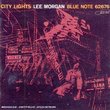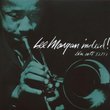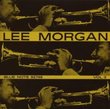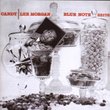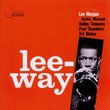| All Artists: Lee Morgan Title: Lee Morgan, Vol. 2 Members Wishing: 0 Total Copies: 0 Label: Toshiba EMI Japan Release Date: 12/15/2007 Album Type: Import Genres: Jazz, Pop Style: Bebop Number of Discs: 1 SwapaCD Credits: 1 |
Search - Lee Morgan :: Lee Morgan, Vol. 2
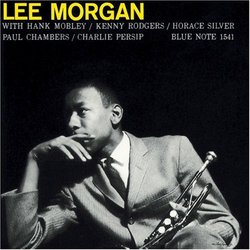 | Lee Morgan Lee Morgan, Vol. 2 Genres: Jazz, Pop
|
Larger Image |
CD DetailsSimilar CDs
|
CD ReviewsEarly Lee Michael B. Richman | Portland, Maine USA | 12/12/2007 (4 out of 5 stars) "For years, the only Lee Morgan 50s session available as a single album was Candy (see my review). But now that the Mosaic set "The Complete Blue Note Lee Morgan Fifties Sessions" has sold out, and presumably the licensing contract has expired, all six original albums have finally been reissued in 2007 by the mother label, EMI. "Volume 2" is obviously the trumpeter's second recording for Blue Note, made on December 2, 1956. It features a sextet of Lee, frequent collaborator Hank Mobley on tenor sax, lesser known Kenny Rodgers on alto sax, Horace Silver on piano, Paul Chambers on bass, and Charlie Persip on drums. What separates this date from other "blowing sessions" of the day, are Benny Golson and Owen Marshall's tight arrangements -- the former lending his talents to four of the album's tracks and the latter assisting with "His Sister" and "D's Fink." For most, Lee Morgan doesn't hit his stride until his stint with the Jazz Messengers or even his landmark The Sidewinder, but "Volume 2" is a great look at early Lee." Mobley's the teacher's pet, Chambers gets off the hook, the Samuel Chell | Kenosha,, WI United States | 04/12/2008 (4 out of 5 stars) "This latest Van Gelder remaster is apt to come as a surprise if not mild disappointment to Morgan followers and even some Blue Note collectors. In many respects, the arrangements, audio, and even playing are reminiscent of some forgettable West Coast recording sessions of the era. Morgan begins tentatively with cup mute on the opener, Golson's classic "Whisper Not." He's followed by a faltering, halting solo by alto saxophonist Kenny Rodgers. Not until it's Mobley's turn do the proceedings hit a smooth and steady gear, with the reassuring, immediately identifiable sound and fluid, melodic ideas of Mobley practically stealing the show were it not for the equally stellar and steady contributions, as accompanist and soloist, of Paul Chambers. Even Silver sounds bland, never dropping the low-register "bombs" that distinguished his driving solo style with Blakey at this time. Morgan plays competently, with brief glimmers of the talent that attracted musicians and producers alike to the precocious teen. Persip, a dependable and aggressive drummer, may be responsible for Chambers walking his lines with such command, but he's relatively muffled in the mix, particularly for a Van Gelder session.
With the exception of the opening number, the tunes and arrangements are quite undistinguished. It's questionable (to say the least) whether the back-up harmonies supplied by the remaining two horn players complement the player who's soloing, especially given the raw, slightly off-center intonation of Rodgers' alto. As much as Golson deserves credit for jump-starting Morgan's career, he too was just beginning to learn his trade as an arranger. (It just struck me that the first 5 tunes are all in minor keys--in the case of tracks 2-3 the same key, and for tracks 2-4, moreover, the same tempo--which is only marginally brighter than "Whisper Not." No wonder I gave up on the session before the 6th track! I'll award the album 4 stars for Mobley and in good faith that the last track, which no doubt I'll get to at a later date, has something new to offer). The audio is somewhat "dead" for a Van Gelder recording, and a remastered one at that. Actually, I'd give the session high marks if the only audible players were Mobley and Chambers, but this recording sounds like a piece of history, and a work in progress, at that. For an example of a simply consummate session--the arranging much fuller and fresher sounding than this one despite the presence of only two horns, the soloing strong by all hands, the mixing balanced and far more satisfying--go to "The Jazz Messengers" (Art Blakey, Columbia, 1956). Unbelievably, the session was recorded nine months before this one and included two of the same players, Mobley and Silver, yet by comparison with it this later session under Morgan's name reminds me of a hapless student who's been put back a couple of grades. Fortunately, Lee would soon become an "A" student, and in the context of far more scintillating classrooms than this one." |

 Track Listings (6) - Disc #1
Track Listings (6) - Disc #1